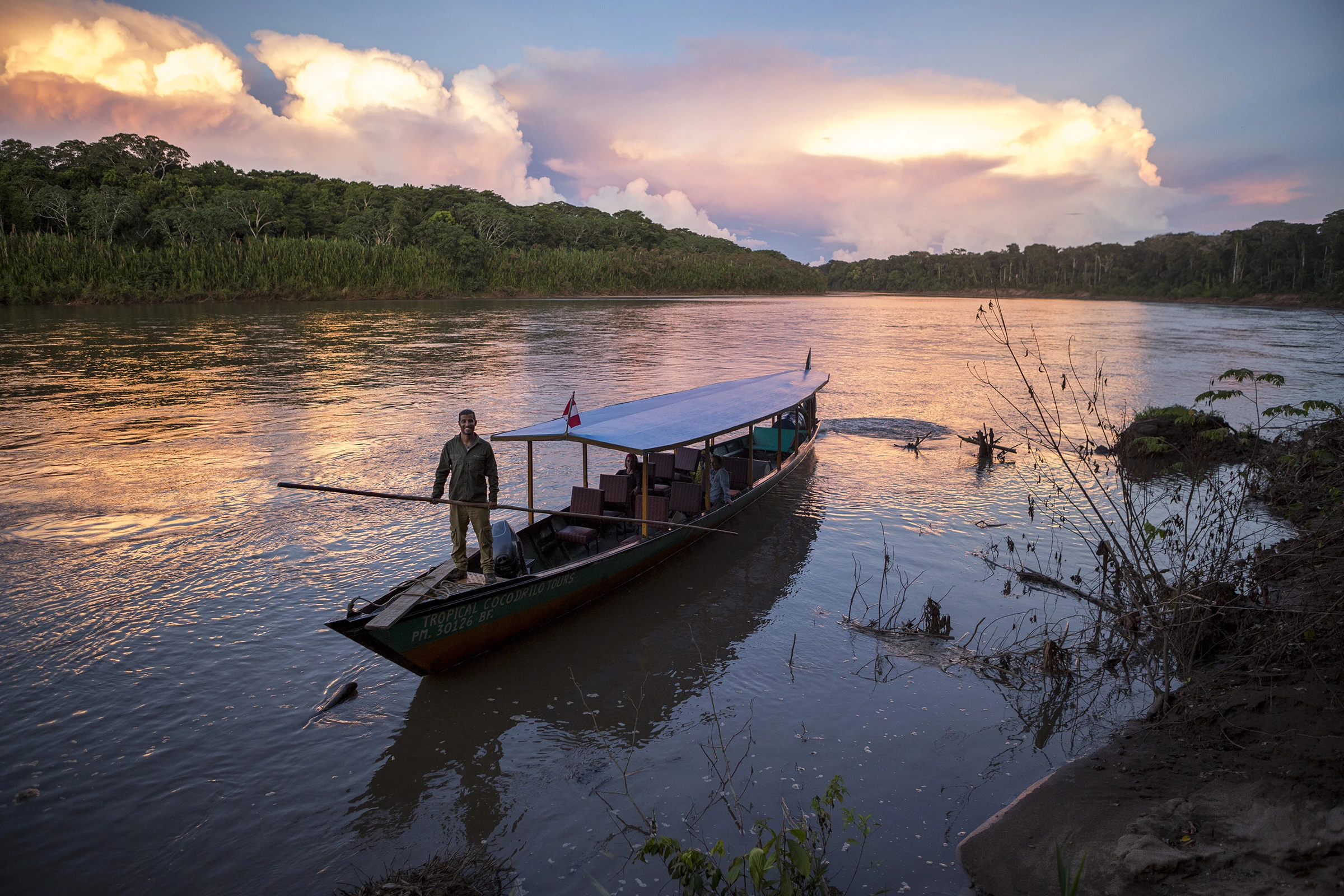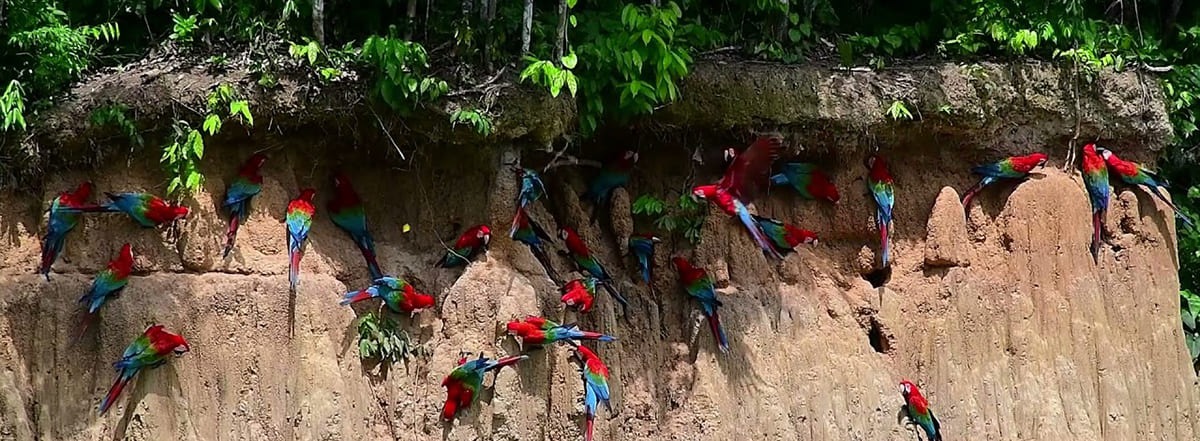The Manu Crudel of Life
Description
If you want more adrenaline and mystical energy in your life, Peru is the best choice to make. We live very stressful lives and need to relax and have fun, this is the country you’ ve been looking for. Peru is not only Machu Picchu it is an awesome country which holds a lot of many historical places, it has coast, highlands and jungles where you can find hidden treasures which are waiting for you to discover. It’s like opening a Pandora’s box, you’ 'll never know what you’ ll get. It’s up to you to escape to this wonderful country to be amazed by its beauty and history. Here you’ ll have a once in a lifetime opportunity to live the most amazing adventure of all. Come to Peru a mystical country that is eager to show you its wonders. You will explore the jungle and its mysteries on this tour. Once you decide to do this awesome tour you will relax and live the beauty of the High Andes, the Manu Cloud forests, and the Manu Blanquillo area. Knowing that you’ ll spend more time on the lagoon, road, jungle trails, lakes, oxbow lake, catamarans, hidden, jungle trails, observation tower, macaws and mammals clay licks, etc., you’ ll increase the chances of spotting many rare species found within the Manu. Come here to Peru and live the greatest adventure of all.
What to Expect
Quick Itinerary:
- Day 1: Cusco to Wayquecha Biological Station.
- Day 2: Wayquecha Biological Station to Cloud Forest Lodge
- Day 3: Cloud Forest Lodge to Amazonia Lodge.
- Day 4: Amazonia Lodge – Manu Learning Centre
- Day 5: Manu Learning Centre.
- Day 6 Manu Learning Center – Tambo Blanquillo Lodge.
- Day 7: Tambo Blanquillo Lodge – Macaw Clay Lick - Camungo oxbow Lake and Observation Tower.
- Day 8: Tambo Blanquillo Lodge – Blanco oxbow Lake – Mammals Clay Lick
- Day 9 (Departure Day): Tambo Blanquillo to Cusco.
Highlights of MANU CRUDEL OF LIFE ( 09 days )
- Type of Tour: PRIVATE TOUR OR SHARED.
- Private Guide: Juan Aguilar.
- Prices and conditions: US.
- Single Supplement Charge: US.
- Note: Private tours can be operational on any day of the week with a minimum of 6 passengers.
- ALL prices shown are NET rates.
- ALL prices shown are in $ USD.
- ALL prices shown are per person rates.
- ALL tours depart/arrive from/until Cusco.
- ALL tours include local taxes, accommodation, full board, excursions, transport and expert Manu guide.
- Prices do not include alcoholic drinks.
Itineray Details
Day 1: Cusco to Wayquecha Biological Station.
Early morning activities are as follows: you will be picked up from your selected hotel in Cusco where our birdwatcher guide will greet you before heading out south of Cusco to enjoy a picnic breakfast at Huarcapay lagoon. The lagoon is surrounded by Inca, and pre-Inca ruins. Here you will see a variety of high Andean waterfalls including Puna, Yellow-billed and Cinnamon Teal, Yellow-billed Pintail, Andean Duck and other wetland associated with birds. White-tufted Grebe and Andean Coot will be there too. Depending on the time of year migrant North American shorebirds (waders) may be present. You will be specifically on the lookout for Wren-like Rushbird, Many-colored Rush-tyrant, Yellow-winged Blackbird, Puna Ibis, Plumbeous Rail and Andean Negrito. You may see birds of prey such as the Aplomado Falcon, Cinereous Harrier, Variable Hawk and Black-chested Buzzard-Eagle. In the arid scrub around the lake you'll look for the endemic Rufous-fronted Canasteros and also Streak-fronted Thornbirds. You should find the pretty, endemic Bearded Mountaineer feeding in the tobacco tree (Nicotania sp.) with Giant Hummingbirds and Trainbearers. Peruvian Ash-breasted and Mourning Sierra-Finches will be here with Greenish Yellow-finches and Blue and Yellow Tanagers.
You will continue the journey making a couple of selected stops in the intermontane valleys specifically for two endemics. You'll have a picnic as breakfast as the sun hits the slopes and colorful Quechua peasant_ people who pass by with livestock creating a peaceful pastoral scene – our target here - the Chestnut-breasted Mountain-Finch. You should see Andean Hillstars, Andean Flickers, Black-throated Flowerpiercers, Chuiguanco Thrush and more. Your next stop is for the endemic Creamy-crested Spinetails, before arriving to the last Andean passage – Ajcanacu and if it's clear you'll be able to look out from the last range of the Andes over the Amazon basin stretching into the distance, as the Incas did in ancient times, worshipping the sun rising over the endless rainforest. A Necessary stop must be done to find _ Scribble-tailed and Line -fronted Canasteros and maybe Puna and Diademed Tapaculos. In the after-noon you will explore the upper limits of the eastern slopes. Managing your way down the eastern slope of the Andes, the forest becomes more continuous and you will spend the afternoon birding to our accommodations at 2800 meters above sea level above Pillahuata. Possibilities are many but we hope to encounter mixed species flocks of Tanagers, Flycatchers and Ovenbirds. Gray-breasted Mountain Toucans, Collared Jays and Mountain Caciques are among some of the many species you may find. In the evening you will go to a favorite spot where you will have luck calling in Swallow-tailed Nightjars.
Lodging: Wayquecha Biological Station
Meals: Picnic Breakfast, Picnic Lunch & Dinner







